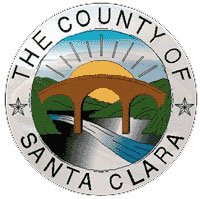Gilroy
– Most people would prefer
”
good news,
”
but the Valley Transportation Agency isn’t shy about taking its
medicine.
Gilroy – Most people would prefer “good news,” but the Valley Transportation Agency isn’t shy about taking its medicine.
A roughly 400-page audit criticizing the VTA’s loss of “regional focus,” “unstable” financial future and a number of “governance challenges” is landing on the desks of agency leaders this week.
It’s a welcome, if not difficult, read. Then again, the financially struggling VTA didn’t ask for “good news” when it paid the Philadelphia-based Hay Group $500,000 for the critical analysis of the agency’s flaws.
“I welcomed the report, I am glad it was commissioned,” said VTA board member Greg Sellers of Morgan Hill, who represents South County. “This is a pivotal time for the VTA. There are several major initiatives, including the comprehensive operational analysis (of bus routes) that the agency is currently undertaking. The Hay Group report compliments and informs these efforts.”
Highlights from the report’s summary, released Friday, include:
– VTA has lost its regional focus and strayed from its core business.
– VTA governance does not operate as designed.
– VTA’s financial capacity and future are uncertain and unstable.
– VTA must consistently avoid conflicts.
– VTA’s organization reflects a lack of focus on the core business.
With a proposed $4.7 billion BART extension pending, fiscal shortfalls looming and a thorough analysis of the VTA’s bus routes moving forward, agency leaders welcomed the report as an opportunity for the agency to make needed improvements.
Increasing ridership is a major hurdle. In the past five years, total miles served by the VTA’s transportation lines have declined by 25 percent while at the same time costs have risen by 3 percent. The VTA’s fare-box recovery ratio hovers near 14 percent, a level regarded as “low performance” in the transit industry, according to the report.
The analysis defines 2007 as a “watershed year” for the VTA. The agency must determine how to maintain its expensive light rail fleet when warranties run out. It must streamline its services to meet regional needs. It must set priorities for projects approved by voters under the Measure A plan in 2000 in light of financial restraints.
The 30-year Measure A plan includes more than $2.8 billion in “unfunded” commitments. To help solve the financial problem, momentum is building for a VTA-specific tax measure in 2008.
Of the proposed Measure A projects, BART continues to generate the most interest – and controversy – among Santa Clara County residents. The VTA is currently doing engineering work for the proposed train line and could make a decision in fall 2008 on the project’s future. The VTA tapped $364 million in state funds for the current design work.
“BART is actually one of our higher-ridership projects,” said VTA board Chairman Dean Chu of Sunnyvale, adding the Hay Group’s findings don’t dampen his enthusiasm for the project. The report is not as critical to the project’s future as the design work, he said, which will spell out the final costs of building the train line.
But Chu and others say the train line might terminate short of downtown San Jose, thus saving billions of dollars. Then again, studies indicate the two downtown stations would generate an abundance of riders and more revenue.
Crowded stations could provide additional money-making opportunities for VTA, such as leasing spaces to retailers, Chu added.
Financial troubles aside, the Hay Group’s findings also highlight the VTA’s “governance challenges” including high turn-over from two-year terms and lack of training programs for board members.
“I strongly agree this is a problem,” said Sellers, who supports restructuring the VTA board slots so South County doesn’t have to share a rotating position with Milpitas, which has different interests. “I was hoping it would be more fully addressed, but as the report pointed out, any major changes to the board’s structure would require state legislation and is therefore difficult to achieve.”
The report says board members need to be groomed for the board position and not just appointed. They need to understand the issues, but more importantly, they need to understand the commitment required.
“That includes not only a willingness to attend the many meetings, but a willingness to put aside parochial concerns and address VTA issues based on what is best for our entire region,” said Sellers. “I keep in mind that my role is not just to consider what is best for Morgan Hill but to make decisions that improve transportation throughout Silicon Valley.”
Supervisor Don Gage, a voting member of the VTA board, said it might be difficult to ensure a purely regional focus.
“It’s nice to say, ‘We have to look at it regionally’ but (board members) are going to look out for their cities,” Gage said.














